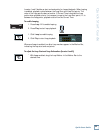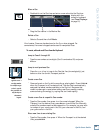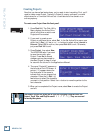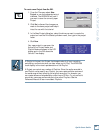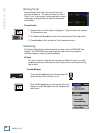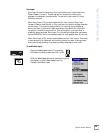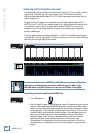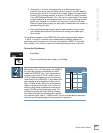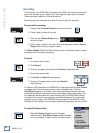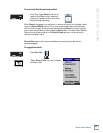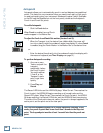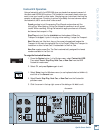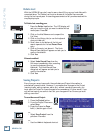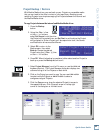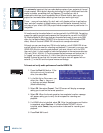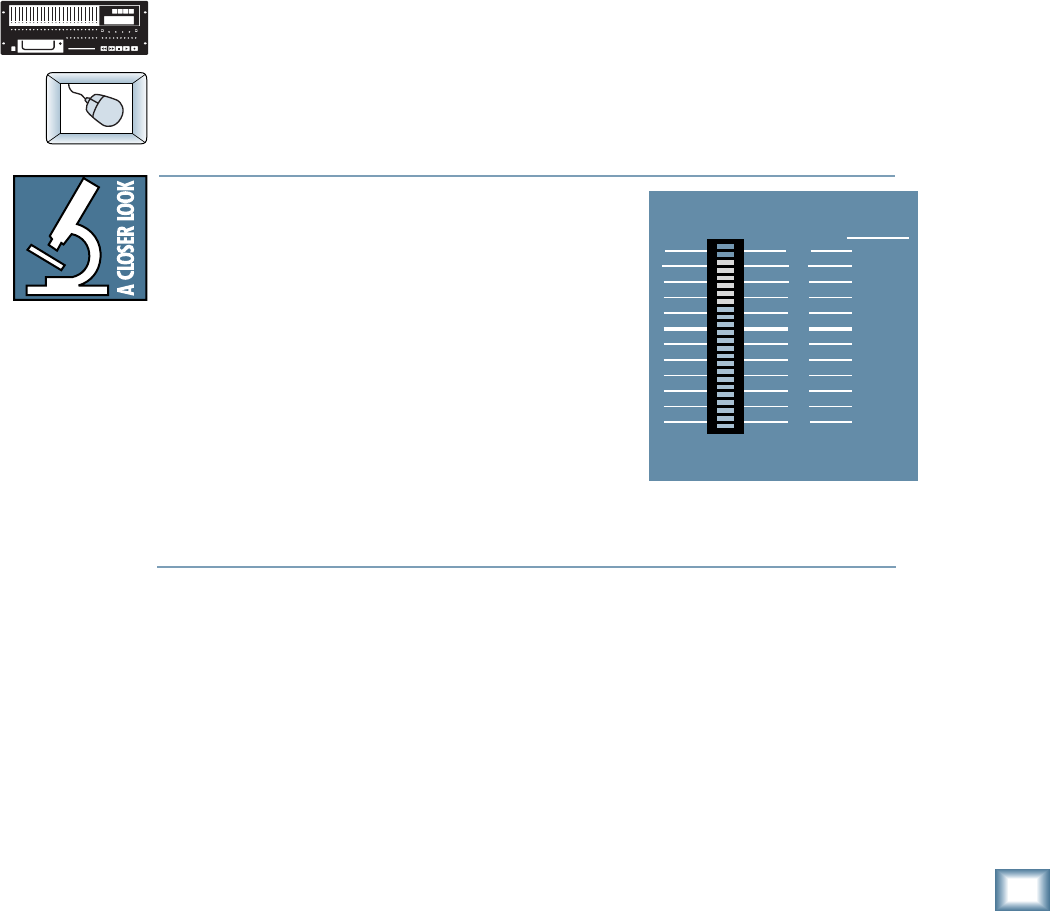
41
Quick Start Guide
Quick Start Guide
3. Alternately, if you have a tone generator or a sound source with a
constant volume (you can hold down a key on a synth), turn All Input on
and send the tone to all 24 tracks of the console. Adjust the output levels
to read 0 VU on analog consoles, or around –20 dBFS on digital consoles.
If the HDR24/96 meters read -15 to -20, you’re in good shape. This leaves
enough headroom for most popular music, but if you’re recording acoustic
music, jazz, classical, or narration, you may want to leave a little more.
When the talent starts to play you may have to make some final tweaks to
get everything just right.
4. After adjusting the tape output levels for each console channel, follow
your console manufacturer’s instructions for setting the console tape
return levels.
The overload indicators on the HDR24/96 light when the signal level reaches
–1 dBFS. In the GUI, the white track number above the Meters flashes red
continuosly when the signal on that track clips (reaches 0 dBFS). If the tracks
Clip Indicator is lit, then turn down the console tape output to that track a bit.
To clear the Clip Indicator:
♦
Press Play.
♦
Click on the flashing track number, or click Play.
With analog I/O, a +22 dBu signal at the HDR24/
96 inputs and outputs corresponds to 0 dBFS
inside the HDR24/96. So, if your console has a
nominal output level (0 VU) of +4 dBu, there is
18 dB of headroom before you hit the maximum
record level on the HDR24/96. It also means that
your console must be capable of putting out at
least +22 dBu without distortion so the console
doesn’t clip while the recorder is still within its
working range. Most professional consoles can
output +22 dBu without breaking a sweat (like
the Mackie Analog and Digital 8•Bus consoles).
But beware that semi-pro consoles often operate
at a nominal output level of –10dBV and will run out of steam before reaching a
level that can take advantage of the recorder’s full resolution.
OL
2
50
4
7
10
15
20
25
30
35
40
+22 dBu
dBu
equivalent
+20
–28 dBu
+18
+15
+12
+7
+2
–3
–8
–13
–18



